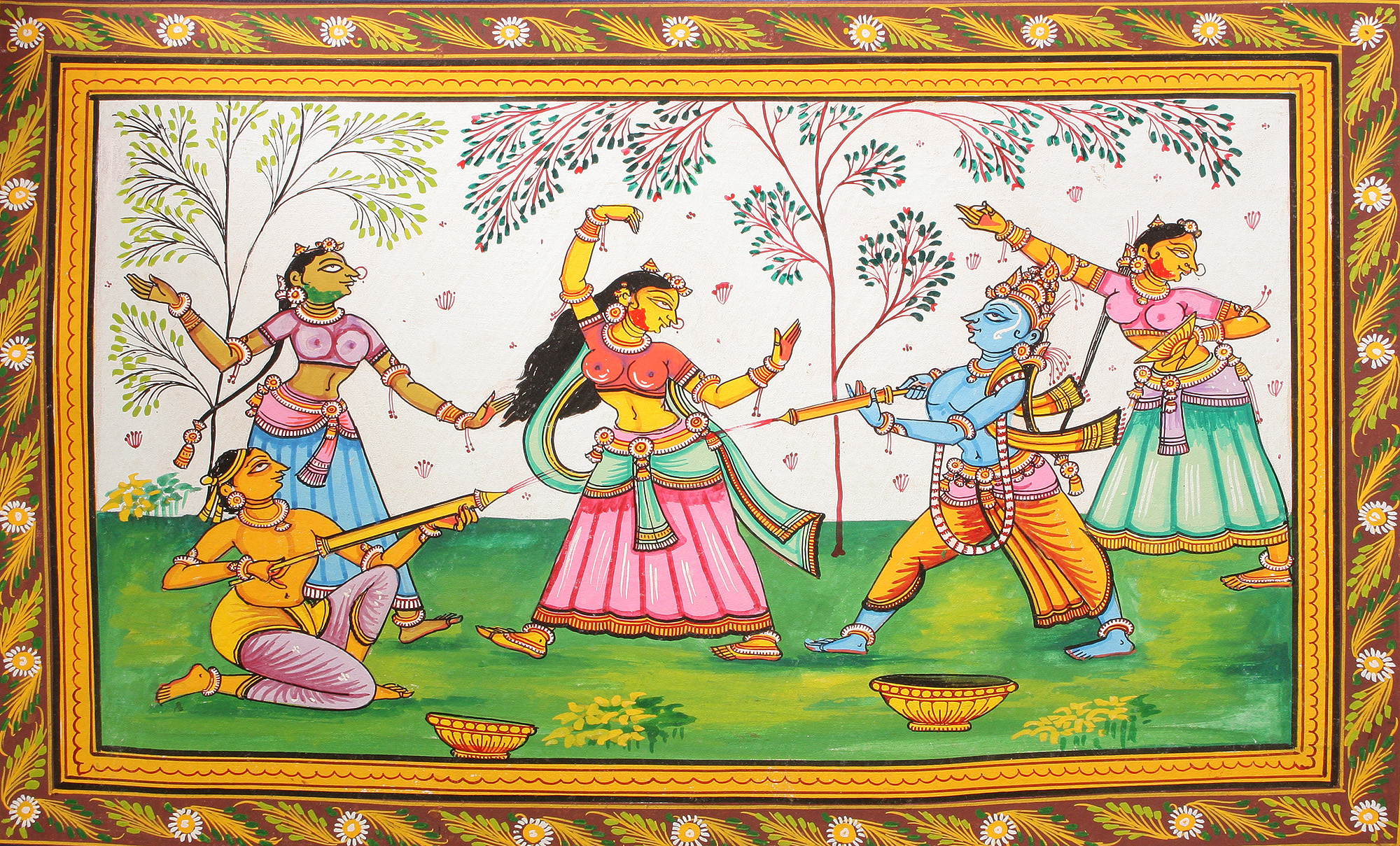The Legacy of Holi – From Krishna Radha to Amir Khusro
Like all other festivals, Holi is imbued with a legend – the legend of Holika Dahan. History however is abound with many more references that are not talked about much when we discuss Holi. The festival of colors which is celebrated on a full moon day of Phalgun is embodied in diverse cultures, in assorted manners.
Holi is also known to be a festival that was ardently celebrated by Lord Krishna and Radha. According to a number of folk tales, a young Krishna used to complain about his dark complexion to his mother Yashoda. He used to say while his beloved Radha is ephemerally fair, why is he dark. Mother Yashoda consoled him by saying what is there in a color. You can smear Radha’s face with any color you want. Lord Krishna, out of his love for Radha went on to apply red gulaal on her face. This gave birth to one of the most celebrated Holi tradition which is immortalized through a number of art forms.


Mughal emperors were not untouched by the euphoria around Holi. They were so fond of this tradition that they brought it in their courts and palaces. Bahadur Shah Zafar, the last Mughal emperor was okay with Hindu ministers smearing gulal on his face. He didn’t think playing Holi affected his religion. Jahangir was pictured playing Holi with his wife, Noor Jahan by artists like Govardhan and Rasik. He is also known to hold Mehfil-e-Holi in ‘Tuzk-e-Jahangiri’. During his rule in Delhi, Holi was also known as Id-e-Gulabi—Pink Id—or Aab-e-Pashi. Holi during the rule of Aurangzeb is mentioned by Lane Poole in her book, – Aurangzíb and the Decay of the Mughal Empire
“During his time there used to be several groups of Holi singers who besides reciting libertine lyrics also indulged in salaciousness, accompanied by various musical instruments.”
Sufi saints like Ameer Khusro and Hazrat Nizamuddin Aulia have admired Holi in their Hindvi and Persian poetry. Abida Parveen kept alive the memory of Hori Ho Rahi Hai written by Shah Niyaz.
Amir Khusro mentions not just the colors of Holi, but the birth place of Lord Krishna as well, in his verses:
Gokal dekha, Mathra dekha,
Par tosa na koi rang dekha
Ey main dhoond phiri hoon
Des bides mein dhoond phiri hoon,
Purab dekha pacham dekha
uttar dekha dakkan dekha
Re main dhoond phiri hoon
Des bides mein dhoond phiri hoon,
Tora rang man bhaayo Moinuddin
Mohe apne hi rang mein rang le Khwaja ji
Mohe rang basanti rang de Khwaja Ji
Mohe apne hi rang mein rang de
Holi’s legacy is hence, as rich as the colors it is played with. From Krishna-Radha to sufi saints, it lives in so many legends with its diverse hues touching upon different cultures.
Comments
- Advertisement -

